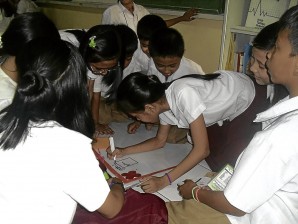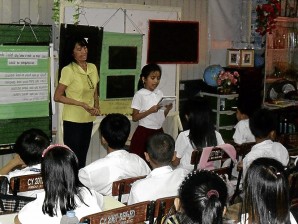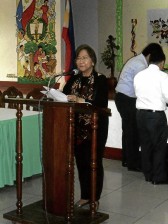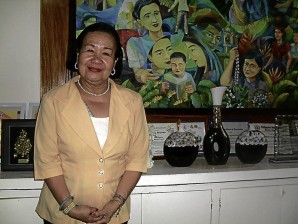Teaching young students to be money-wise
“Why are prices of merchandise up during the holiday season?” Teacher Milynda Castro asked her Grade 4 pupils.
The boy she called answered, “Prices go up because many people are buying stuff during Christmas.”
Castro had a follow-up question, “Should we spend all our hard-earned money during Christmas?”
The entire class gave a resounding “No.”
Without going into the technicalities and jargon of economics, Castro’s students at Aurora A. Quezon Elementary School (AAQES) in Manila were learning the basics of the law of supply and demand.
The discussion stemmed from a news story about inflation during Christmas, which was read by a student at the beginning of the class.
Seeing that her students were all getting the lesson, Castro then went on to ask about saving, “Who among you has a piggy bank?”
Everyone raised a hand.
Curricular offering
Financial education has been part of the basic curriculum at AAQES for five years now.
School principal Dr. Elizabeth Arrobang explained that lessons on money matters were integrated into three subjects: Hekasi (heograpiya, kasaysayan, sibika) or social science, GMRC (good manners and right conduct) or values education, and home economics and livelihood education.
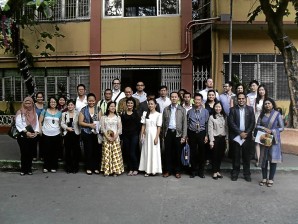
DELEGATES to the Child and Youth Finance Asia Pacific Regional Meeting hosted by BSP observed a financial literacy class at Aurora A. Quezon Elementary School.
Arrobang said teaching kids how to save, invest and deposit their money would not only make them financially literate but also inculcate the values of honesty and prudence. At the same time, she said, it would help “propel our country to greater heights of economic growth.”
AAQES is one of many public schools in the country that have integrated financial education into the curriculum. The Bangko Sentral ng Pilipinas (BSP), which saw the need to make kids financially literate, partnered with the Department of Education (DepEd) to craft a teaching guide to be used in preparing lesson plans.
Initiated by former Education Secretary Jesli Lapus, the project remains a priority for the current secretary, Br. Armin Luistro.
It took at least two years and countless consultations with stakeholders before BSP and DepEd were able to come up with the teaching guide.
In the beginning, not everyone thought it was a good idea. Fe dela Cruz, BSP director for corporate affairs, said critics asked why BSP and DepEd put so much effort into teaching public school students to save money when they did not have enough to begin with.
Dela Cruz said BSP Governor Amando Tetangco Jr.’s response to the critics was: “When will you teach people how to swim, when they’re drowning? When they’re in the middle of the sea?”
“[Saving money] is a lifelong endeavor,” Dela Cruz said. “We are looking forward to raising a new generation of young people who know how to use money well, not deficit spenders.”
Involving private schools
Public schools are not the only ones benefiting from the financial literacy program.
Dela Cruz said BSP was also coordinating with Catholic Educational Association of the Philippines and the Philippine Accrediting Association of Schools, Colleges and Universities to bring financial education to private schools.
Also, as part of the financial education program, BSP tasked local banks to initiate kiddie account programs to attract young savers. The project “Banking on Your Future” was created.
So far, 12 banks offer savings programs designed for children. Some of the banks go on school tours “to encourage and inspire students to deposit and save.”
The Rizal Commercial Banking Corp. (RCBC), for instance, has the WISE (Wise Investors Save Early) program. Apart from motivating kids to open savings accounts, RCBC also teaches financial literacy through games, activities and an animated show.
Banco de Oro (BDO) has the Junior Savers Club, which targets kids aged 7 to 12. It offers, among other things, a discount card for depositors who have a maintaining balance of P500. The discount card can be used in SM malls and other partner establishments.
The kiddie account program of Bank of the Philippine Islands (BPI) is Jumpstart. Depositors can enjoy discounts in BPI partner stores by presenting their automated teller machine (ATM) cards.
BPI also distributes a mini magazine to teach kids about money management and to encourage more savings. It also uses social media to reach the youth.
All banks participating in the kiddie account program have set an initial deposit of P100 to open an account. They discourage kids from withdrawing their savings by requiring a 12-month buildup period.
